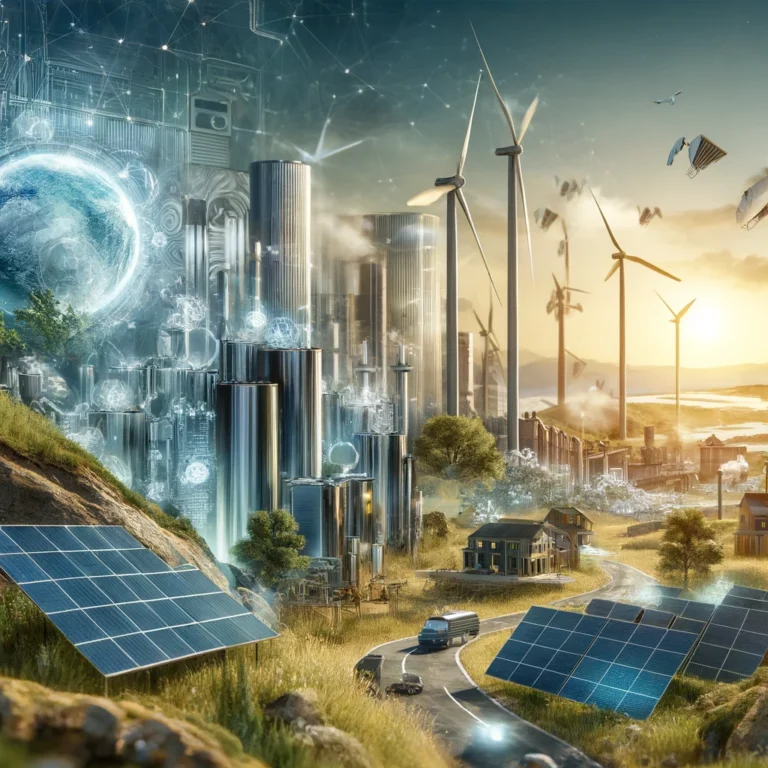The transition to renewable energy is one of the most pressing issues of our time. As the world grapples with the impacts of climate change, the need for sustainable and clean energy sources has never been more critical. Renewable energy sources, such as solar, wind, and hydroelectric power, offer a viable alternative to fossil fuels, but the path to widespread adoption is fraught with challenges and opportunities. This article explores the future of renewable energy, examining both the hurdles and the potential benefits.
The Promise of Renewable Energy
1. Environmental Benefits
Renewable energy sources produce little to no greenhouse gas emissions, making them a key component in the fight against climate change. By reducing our reliance on fossil fuels, renewable energy can help lower carbon dioxide levels in the atmosphere, mitigate global warming, and improve air quality.
2. Economic Growth and Job Creation
The renewable energy sector has the potential to drive significant economic growth. Investment in renewable energy infrastructure can create millions of jobs worldwide. According to the International Renewable Energy Agency (IRENA), the renewable energy sector employed over 11 million people globally in 2018, a number that continues to grow as more countries adopt green energy policies.
3. Energy Security and Independence
Renewable energy can enhance energy security by reducing dependence on imported fuels. Countries that invest in domestic renewable energy sources can reduce their vulnerability to geopolitical tensions and price fluctuations associated with fossil fuel markets. This energy independence can lead to more stable and resilient energy systems.
Challenges to Renewable Energy Adoption
1. High Initial Costs
One of the main challenges of renewable energy is the high initial investment required for infrastructure development. Solar panels, wind turbines, and other renewable technologies can be expensive to install, although their long-term operating costs are generally lower than those of fossil fuel plants.
2. Intermittency and Storage Issues
Renewable energy sources, particularly solar and wind, are intermittent by nature. The sun doesn’t always shine, and the wind doesn’t always blow, leading to potential gaps in energy production. Developing efficient energy storage systems, such as advanced batteries, is crucial to ensuring a reliable supply of renewable energy.
3. Land and Resource Use
Large-scale renewable energy projects can require significant amounts of land and resources. For example, solar farms and wind farms need vast tracts of land, which can sometimes conflict with agricultural or conservation needs. Balancing land use and minimizing environmental impacts are important considerations for the renewable energy sector.
Technological Innovations and Policy Support
1. Advances in Technology
Technological innovation is key to overcoming the challenges of renewable energy. Advances in solar panel efficiency, wind turbine design, and energy storage systems are making renewable energy more viable and cost-effective. Continued investment in research and development is essential to drive further improvements.
2. Supportive Policies and Incentives
Government policies and incentives play a crucial role in promoting renewable energy adoption. Subsidies, tax credits, and grants can make renewable energy projects more financially attractive. Additionally, policies that set renewable energy targets and mandate reductions in carbon emissions can drive the transition to a greener energy mix.
3. International Cooperation
Global challenges require global solutions. International cooperation and agreements, such as the Paris Agreement, are essential for coordinating efforts to combat climate change and promote renewable energy. Sharing technology, knowledge, and financial resources can help accelerate the global transition to renewable energy.
Conclusion
The future of renewable energy is filled with both challenges and opportunities. While the transition to a sustainable energy system requires significant investment, technological innovation, and supportive policies, the potential benefits for the environment, economy, and energy security are immense. By addressing the hurdles and capitalizing on the opportunities, we can pave the way for a cleaner, more sustainable future.

